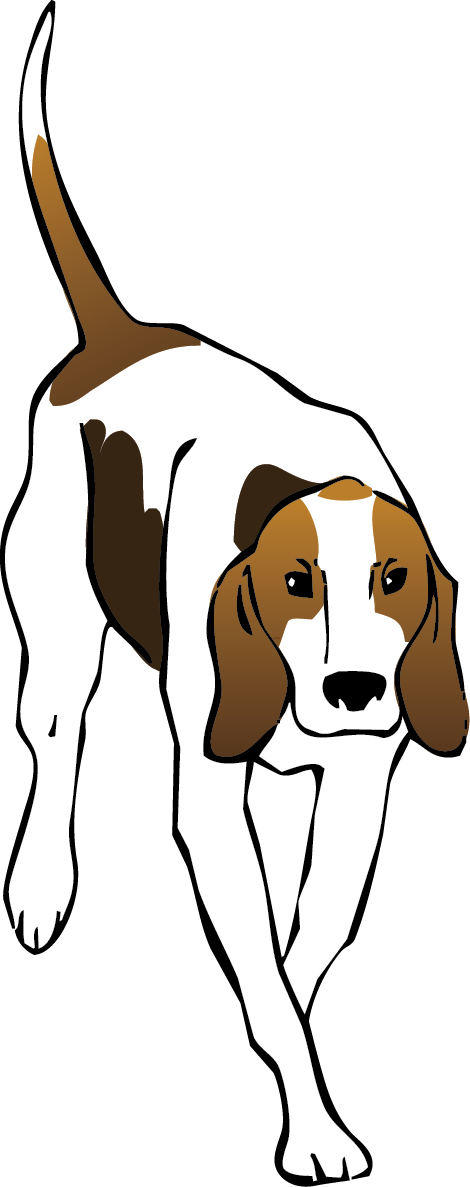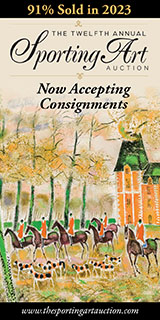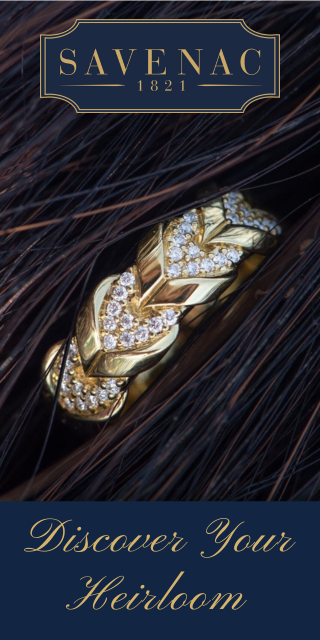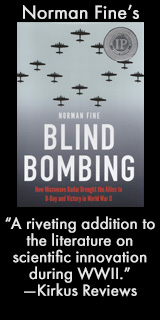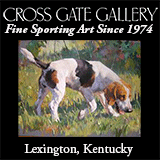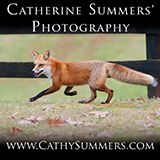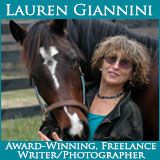Literature
The Fantastic Mr. Jorrocks
“Unting is all that's worth living for — all time is lost wot is not spent in 'unting — it is like the hair we breathe — if we have it not we die — it's the sport of kings, the image of war without its guilt, and only five-and-twenty percent of its danger."
—Jorrocks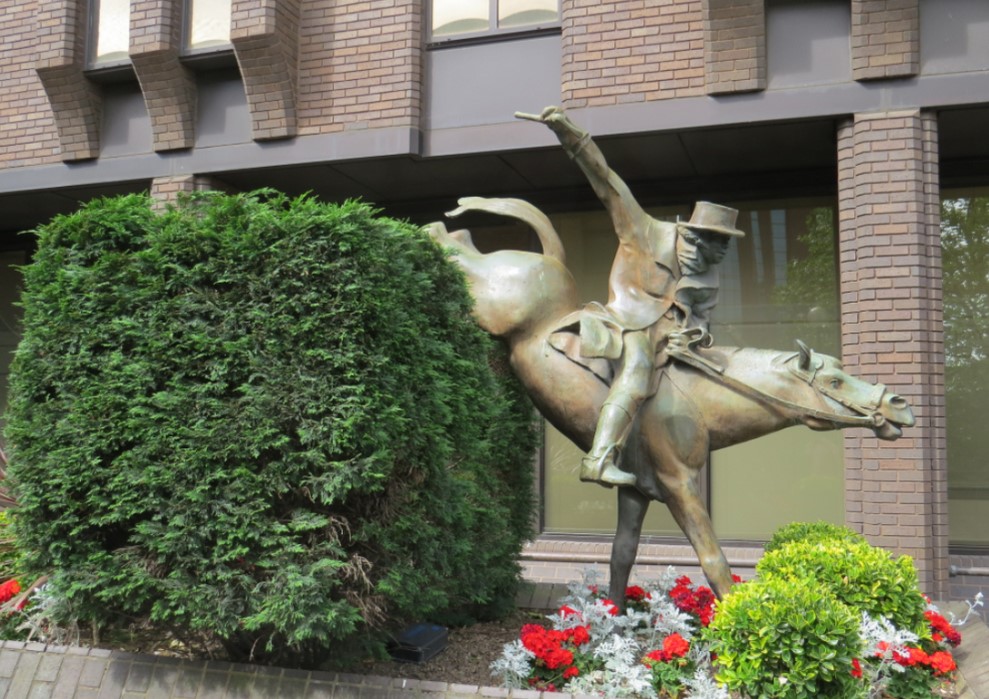 John Mills, Mr. Jorrocks statue, Croydon. UK
John Mills, Mr. Jorrocks statue, Croydon. UK
As someone who, prior to 2012, had limited knowledge of sporting literature, art, and artists, I had absolutely no idea who Mr. Jorrocks was. In March 2020, right before the pandemic stopped the world, the National Sporting Library & Museum received a generous bequest from Mrs. Katrina Becker, a faithful friend of the museum for many years. Included in this gift was a portrait of a man with a cheery expression on his face. He made me laugh, and I asked our Head Curator Claudia Pfeiffer, “Who is that?!”
Riding Lesson
Henry Taylor is an American poet, author of more than fifteen books of poems, and winner of the 1986 Pulitzer Prize for Poetry.
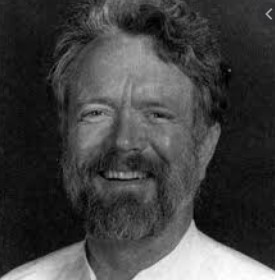
I learned two things
from an early riding teacher.
He held a nervous filly
in one hand and gestured
with the other, saying, "Listen.
Keep one leg on one side,
the other leg on the other side,
and your mind in the middle."
Within the Confines of this Pasture, How the Universe Is Understood
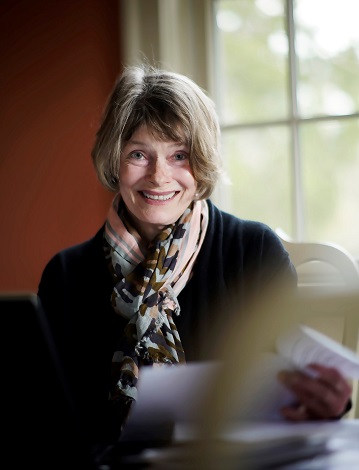 Wendell Hawken / Matthew Klein photo
Wendell Hawken / Matthew Klein photo
September pitch-black mornings I leave the lights off
so I can see to find my horse out in his field,
his flat black shape darker than the dark.
Rope and halter in one hand, ankle-deep in tall grass dew,
I walk to where he might be – beside his rock outcrop,
or rump up to his poplar.
The Fox’s Morning
 The Fox's Morning & Other Stories, W.H. DeCourcy Wright, edited by Ann L. McIntosh, illustrated by Peggy Kauffman, The Elkridge-Harford Hunt, Maryland, 2010, 106 pages, $33.00It is possible that the fox was not content with such a diet as nature has provided for him, but chose to invade the domain of man, and to filch from an ill-protected roost of chickens, a matronly hen, whose eggs had been helping to fill the basket of some thrifty farmer’s wife. Pleasure would be too mild a word to employ in describing the fox’s sensations resulting from a successful venture of this kind. Wild rapture would be more appropriate, with a dash of sneering derision and scornful mockery of humankind, whose efforts at poultry raising the wild animal finds so interesting. In any event, it is probable that he welcomes the pale light of dawn as a signal for him to relax.
The Fox's Morning & Other Stories, W.H. DeCourcy Wright, edited by Ann L. McIntosh, illustrated by Peggy Kauffman, The Elkridge-Harford Hunt, Maryland, 2010, 106 pages, $33.00It is possible that the fox was not content with such a diet as nature has provided for him, but chose to invade the domain of man, and to filch from an ill-protected roost of chickens, a matronly hen, whose eggs had been helping to fill the basket of some thrifty farmer’s wife. Pleasure would be too mild a word to employ in describing the fox’s sensations resulting from a successful venture of this kind. Wild rapture would be more appropriate, with a dash of sneering derision and scornful mockery of humankind, whose efforts at poultry raising the wild animal finds so interesting. In any event, it is probable that he welcomes the pale light of dawn as a signal for him to relax.
Hark! Old Horse
 Carla Hawkinson, MFH with her soulmate, Forty-One, her inspiration for the poem / Joy Bragg This poem was first published in the Summer 2008 issue of Covertside when I was editor of that magazine. It was re-published in 2013 (the year the old horse passed away) in Foxhunting Life. It’s time for a reprise, if only to remind our readers that there are some excellent contemporary sporting poets still among us, though precious few.
Carla Hawkinson, MFH with her soulmate, Forty-One, her inspiration for the poem / Joy Bragg This poem was first published in the Summer 2008 issue of Covertside when I was editor of that magazine. It was re-published in 2013 (the year the old horse passed away) in Foxhunting Life. It’s time for a reprise, if only to remind our readers that there are some excellent contemporary sporting poets still among us, though precious few.
The horse, Forty-One, died at age twenty-seven. He hunted the better part of nineteen seasons for the author, who was MFH of the Tennessee Valley Hunt.
At Galway Races
 William Butler Yeats“At Galway Races” was written in Coole Park, Lady Gregory's house, in 1908 after the poet had spent a day at the Galway Race Meeting. That is over a century ago but the wish it expresses is the same as that expressed by the new Minister for the Arts in Ireland, Heather Humphries, in a recent radio interview. It is a wish that is shared by virtually all artists, literary and otherwise, however 'elitist' they're supposed to be: "Art for everybody." And it is one that Yeats expressed often in prose and poetry.
William Butler Yeats“At Galway Races” was written in Coole Park, Lady Gregory's house, in 1908 after the poet had spent a day at the Galway Race Meeting. That is over a century ago but the wish it expresses is the same as that expressed by the new Minister for the Arts in Ireland, Heather Humphries, in a recent radio interview. It is a wish that is shared by virtually all artists, literary and otherwise, however 'elitist' they're supposed to be: "Art for everybody." And it is one that Yeats expressed often in prose and poetry.
AT GALWAY RACES
The Fox’s Prophecy
 Painting by Anthony BarhamThe Fox’s Prophecy was written in 1871 by D. W. Nash and presented to the then Master of the Ledbury Hounds. Foxes have forever been suspected of harboring deep thoughts, and this poem certainly reflects those ancient superstitions. Through Nash’s fox we read predictions of a future that might well be recognizable to many readers in these times.
Painting by Anthony BarhamThe Fox’s Prophecy was written in 1871 by D. W. Nash and presented to the then Master of the Ledbury Hounds. Foxes have forever been suspected of harboring deep thoughts, and this poem certainly reflects those ancient superstitions. Through Nash’s fox we read predictions of a future that might well be recognizable to many readers in these times.
However, Foxhunting Life remains apolitical, as always, and, if you read carefully, you will find that for every stone cast by this poem at anyone who might take offense, be assured that there is a stanza here casting a stone as well at the opposite end of the spectrum. The fox, also apolitical, seems to believe that all humans have something to answer for.
For swiftly o’er the level shore
The waves of progress ride;
The ancient landmarks one by one
Shall sink beneath the tide.
Phillipa’s Fox-Hunt (Part 2)
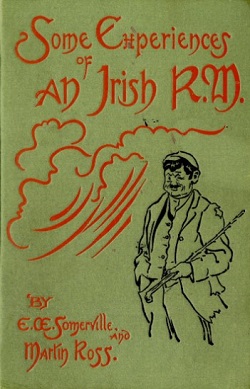 In this week's Bonus article, free to all (no subscription necessary), we rejoin Philippa as she is escorted into the dining room at Aussolas Castle after her first foxhunting experience. She is fully out of breath, having followed hounds by bicycle and across the country on foot led by two local country lads showing her the way. Major Sinclair Yeates, R.M., who has been following hounds on a supremely confidential hunter borrowed from Lady Knox, finds his new bride in a state of unsuppressed excitement scarcely recognizable from the proper young English lady he supposed he had married.
In this week's Bonus article, free to all (no subscription necessary), we rejoin Philippa as she is escorted into the dining room at Aussolas Castle after her first foxhunting experience. She is fully out of breath, having followed hounds by bicycle and across the country on foot led by two local country lads showing her the way. Major Sinclair Yeates, R.M., who has been following hounds on a supremely confidential hunter borrowed from Lady Knox, finds his new bride in a state of unsuppressed excitement scarcely recognizable from the proper young English lady he supposed he had married.
Mrs. Knox was already at breakfast when Philippa was led, quaking, into her formidable presence. My wife's acquaintance with Mrs. Knox was, so far, limited to a state visit on either side, and she found but little comfort in Flurry's assurances that his grandmother wouldn't mind if he brought all the hounds in to breakfast, coupled with the statement that she would put her eyes on sticks for the Major.
Morning Stables
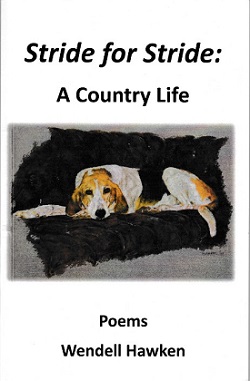 Stride for Stride: A Country Life, Bartley Books, an imprint of Three Pounds Press, Millwood, Virginia, 2020, paper, cover art by Anita Baarns, 70 pp, 43 poems. Available from the author.This slim, award-winning volume of forty-three poems by Wendell Hawken speaks of horses, foxhounds, and country life. Writing with authority on hunting, scent, whelping, riding, animal husbandry, and woodlore, Wendy conjures vivid mental images easily recognized and pleasurably savored by foxhunters who have ‘been there.’ Several of the poems have been previously published in Foxhunting Life, eliciting high praise from readers and establishing this author, in my view, as the most prolific, talented, and serious writer of sporting poetry of the present time.
Stride for Stride: A Country Life, Bartley Books, an imprint of Three Pounds Press, Millwood, Virginia, 2020, paper, cover art by Anita Baarns, 70 pp, 43 poems. Available from the author.This slim, award-winning volume of forty-three poems by Wendell Hawken speaks of horses, foxhounds, and country life. Writing with authority on hunting, scent, whelping, riding, animal husbandry, and woodlore, Wendy conjures vivid mental images easily recognized and pleasurably savored by foxhunters who have ‘been there.’ Several of the poems have been previously published in Foxhunting Life, eliciting high praise from readers and establishing this author, in my view, as the most prolific, talented, and serious writer of sporting poetry of the present time.
Wendy's poem, "Morning Stables," from this collection will resonate with horsemen and horsewomen who have tended their own, and will jiggle old memories especially of those who were favored with the horse gene as children, and no one else really understood!
Who is Edith Somerville?
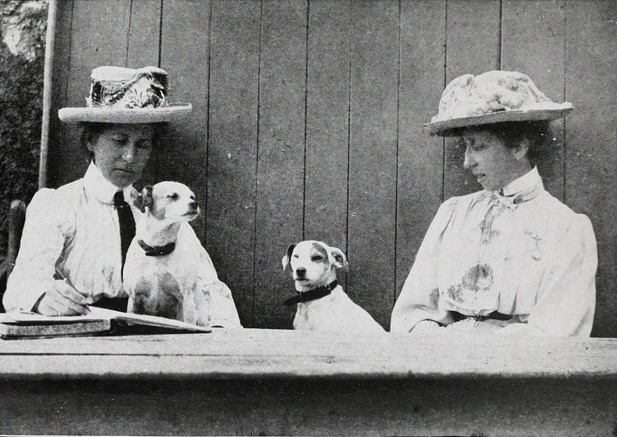 Edith Somerville (left) and Violet Martin (right) from "Irish Memories" (1919) by E. Œ. Somerville and Martin Ross. Image from Wikimedia Commons.
Edith Somerville (left) and Violet Martin (right) from "Irish Memories" (1919) by E. Œ. Somerville and Martin Ross. Image from Wikimedia Commons.
I discovered Edith Œnone Somerville (Irish, 1858-1949), cousin and writing partner of Violet Martin (Irish, 1862-1915), while searching the National Sporting Library & Museum archives for content to post on the NSLM’s Facebook page for Women’s History Month. One of my favorite things about my job are the opportunities I have to research our collections and share them digitally, but I felt that Edith Somerville’s story deserved more than a Facebook post.
Somerville was the first female Master of Foxhounds in Ireland, the West Carbery in Skibereen, County Cork. By no means incidentally, she was also a writer, humorist, artist, suffragist and feminist, and believer in the occult. She was President of the Munster Women’s Franchise League, was awarded the degree of Doctor of Letters by Trinity College Dublin in 1932, and was invited to become a member of the Irish Academy of Letters by W.B. Yeats the following year.
